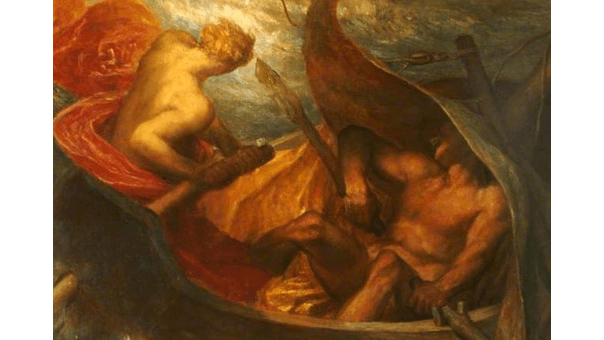It can be very dangerous to row a small boat on the high seas, especially as a storm approaches. The air becomes thick and sultry. Dense, dark thunderclouds press overhead, fierce gusts rip the sail, and high waves threaten to sink the boat. Only an experienced pilot could maneuver a small boat through a big storm.
And who said it better than Emily Dickinson in “Adrift! A little boat adrift!”:
ADRIFT! A little boat adrift! And night is coming down! Will no one guide a little boat Unto the nearest town?
So sailors say, on yesterday, Just as the dusk was brown, One little boat gave up its strife, And gurgled down and down.
But angels say, on yesterday, Just as the dawn was red, One little boat o’erspent with gales Retrimmed its masts, redecked its sails Exultant, onward sped!
George Frederic Watts (1817–1904) created this dangerous situation in his painting “Love Steering the Boat of Humanity.” The artist personified love as a stalwart pilot taking charge of the boat carrying a man, representing humanity, through the churning water. The waves appear alive as they seem to grasp at the little vessel, trying to bring it down to the depths.





